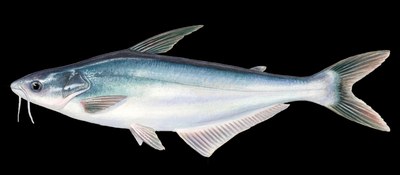Thesis defence by Dang Quang Hieu
- https://ilee.unamur.be/events/thesis-defence-by-dang-quang-hieu
- Thesis defence by Dang Quang Hieu
- 2022-06-03T09:30:00+02:00
- 2022-06-03T11:30:00+02:00
- When Jun 03, 2022 from 09:30 AM to 11:30 AM (Europe/Brussels / UTC200)
- Where D13 (5 Rempart de la Vierge, 5000 Namur)
- Web Visit external website
-
Add event to calendar
 iCal
iCal
Title: Impact of salinity on striped catfish (Pangasianodon hypophthalmus) and strategies to improve its adaptation to brackish water
 Abstract
Abstract
The striped catfish industry is ranked third in Vietnam's exports, behind the rice and shrimp sectors. However, the Mekong Delta, which contributes more than 75% of the national striped catfish production, is negatively affected by increasing salinity in recent years. This is mainly due to global climate change and the construction of dams in the river upstream. For striped catfish, the salinity of up to 10 psu (practical salinity unit) that can occur during the dry season is correlated with poor growth and high mortality. This thesis aims to better understand the physiological changes of striped catfish at different developmental stages as well as alterations of digestive enzymatic activities, intestinal microbiota and methylation process under salinity and, based on the results, to estimate the extent to which a salinity-based rearing programme can produce striped catfish better adapted to increased salinity.
Several authors have pointed out that salinity has significant effects on growth performance, stress indicators and immunity of striped catfish. However, most of them focus on the juvenile stages. It is evident that salinity tolerance increases during early development, which strongly coincides with the process of organogenesis. Therefore, a series of experiments were conducted during this thesis on different developmental stages of this species in order to provide a general overview of physiological responses under osmotic changes. In addition, the molecular mechanisms of osmoregulation were studied in different organs through the expression of genes involved in ion exchange and water uptake. Alterations in the gut microbiota playing an important role in digestive enzymes and immunity of fish were also studied. In addition, hormesis, known as the use of a low level of stress to improve the organism's ability to tolerate more severe stress, was applied to estimate whether molecular and cellular alterations by exposure to low salinity during the early life stage can affect the ability to cope with salinity later, in the juvenile stage, through alterations in key indicators of growth performance, osmoregulation and stress responses.
The genetic selection programme is one of the most effective methods to produce a trait that is more tolerant to a severe stressor. In this thesis, we produced a striped catfish that is better adapted to salinity through selection based on growth performance. Finally, to better understand the molecular alterations that drive the selection programme, the offspring were subjected to salinity during early development to estimate the transgenerational aspect and heritability of salinity resistance.
 In summary, a salinity of 20 psu is considered the upper limit for striped catfish development as it significantly decreased survival in all experiments. A salinity of 5 psu represents the optimal condition for striped catfish development. At the larval stage, fish 10 days after hatching could survive up to intermediate salinities of 5 and 10 psu, thus increasing the fish's tolerance to temperature stress. The salinity gradient increased the activities of pepsin, leucine alanine, alpha amylase, pepsin at both developmental stages (larvae and juveniles) after early exposure to the saline environment. In addition, salinities of 15 and 20 psu significantly increased plasma osmolality and ion concentration. In terms of molecular mechanisms, salinities of 15 and 20 psu altered the expression of genes related to ion exchange and water resorption such as nka1a, nka1b, slc12a1, slc12a2, cftr and apq1. Among the osmoregulatory organs, the gut was considered the most responsive to hyperosmotic conditions and increasing salinity significantly altered the profile of the gut microbiota to make it more consistent with the environmental microbiome. In addition, genes coding for heat shock proteins, including hsp60, hsp70 and hsp90, were upregulated in fish exposed to hyperosmotic conditions in the gills, gut and kidney tissues of the head. Interestingly, exposure of larvae to 5 psu resulted in several changes in the regulation of genes related to osmoregulatory and stress responses and even improved survival and weight gain of juveniles secondarily exposed to 10 psu. For the rearing programme, it was clear that the selection improved salinity tolerance in the offspring with increased survival and weight gain at different developmental stages. In addition, the programme resulted in changes in genes related to methylation and stress tolerance in their offspring after 6 days of hatching. The experiment also showed that DNA reprogramming in striped catfish is a dynamic process and that mRNA levels of dnmt, tet3 and mecp2 were regulated during this period. Nevertheless, incubation in 2.5 psu significantly increased the dnmt genes set in 6-day post-hatch larvae.
In summary, a salinity of 20 psu is considered the upper limit for striped catfish development as it significantly decreased survival in all experiments. A salinity of 5 psu represents the optimal condition for striped catfish development. At the larval stage, fish 10 days after hatching could survive up to intermediate salinities of 5 and 10 psu, thus increasing the fish's tolerance to temperature stress. The salinity gradient increased the activities of pepsin, leucine alanine, alpha amylase, pepsin at both developmental stages (larvae and juveniles) after early exposure to the saline environment. In addition, salinities of 15 and 20 psu significantly increased plasma osmolality and ion concentration. In terms of molecular mechanisms, salinities of 15 and 20 psu altered the expression of genes related to ion exchange and water resorption such as nka1a, nka1b, slc12a1, slc12a2, cftr and apq1. Among the osmoregulatory organs, the gut was considered the most responsive to hyperosmotic conditions and increasing salinity significantly altered the profile of the gut microbiota to make it more consistent with the environmental microbiome. In addition, genes coding for heat shock proteins, including hsp60, hsp70 and hsp90, were upregulated in fish exposed to hyperosmotic conditions in the gills, gut and kidney tissues of the head. Interestingly, exposure of larvae to 5 psu resulted in several changes in the regulation of genes related to osmoregulatory and stress responses and even improved survival and weight gain of juveniles secondarily exposed to 10 psu. For the rearing programme, it was clear that the selection improved salinity tolerance in the offspring with increased survival and weight gain at different developmental stages. In addition, the programme resulted in changes in genes related to methylation and stress tolerance in their offspring after 6 days of hatching. The experiment also showed that DNA reprogramming in striped catfish is a dynamic process and that mRNA levels of dnmt, tet3 and mecp2 were regulated during this period. Nevertheless, incubation in 2.5 psu significantly increased the dnmt genes set in 6-day post-hatch larvae.
Overall, the thesis confirmed that striped catfish can tolerate a hyperosmotic environment of 10 psu and that fish older than 10 days can survive up to 15 psu. The physiological changes could have lasting effects through hormesis appoachy. In addition, the rearing programme is a potential method to increase salinity tolerance that has improved survival and weight gain, inducing transgenerational effects. However, further studies are still needed, focusing on prolonged exposure to salinity and selection of subsequent generations to improve and stabilise salinity tolerance.
Hieu will present the results of his PhD thesis, conducted in the Biology Department/URBE under the supervision of Patrick Kestemont.
 Institute of Life, Earth and Environment
Institute of Life, Earth and Environment
